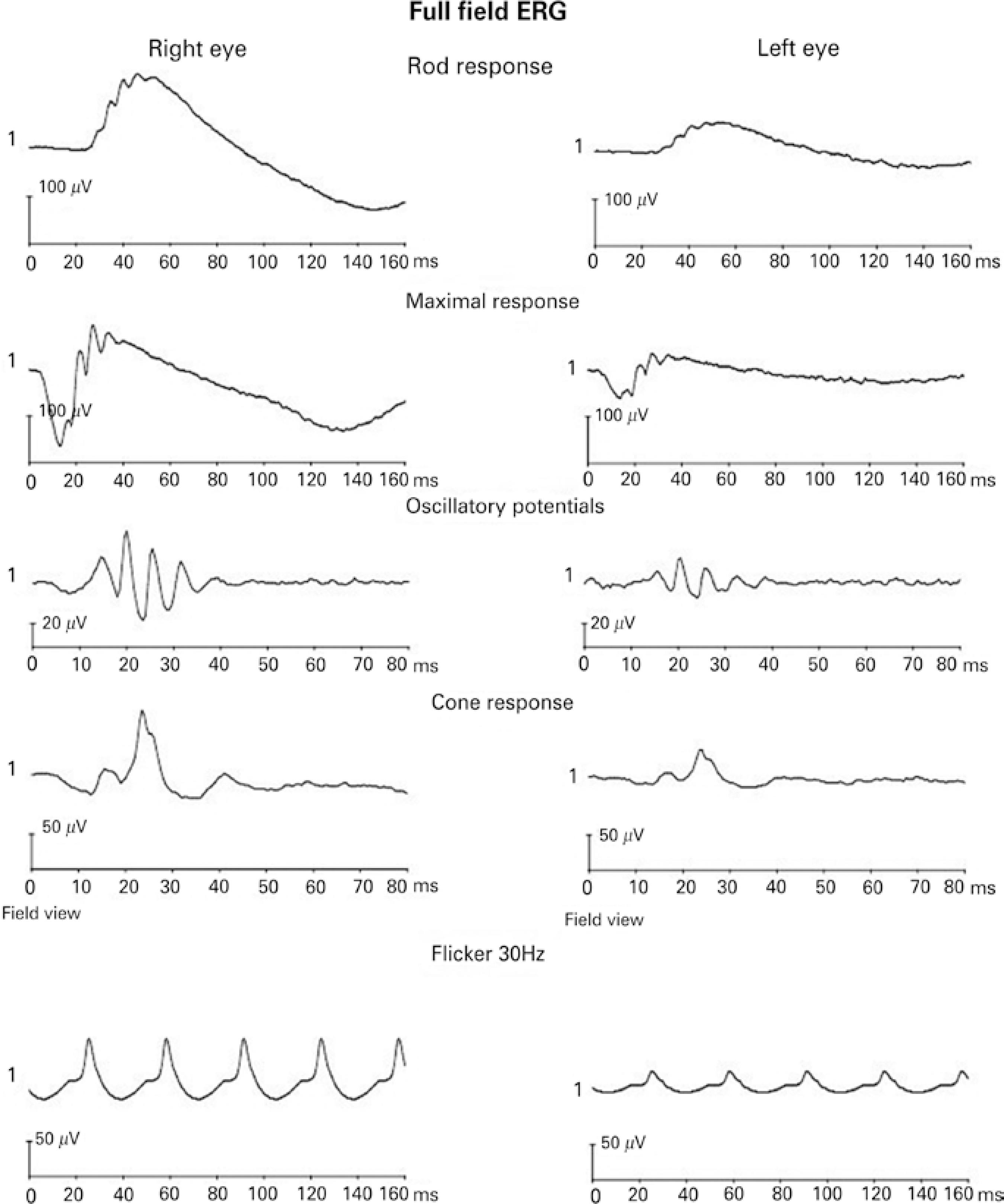ABSTRACT
Purpose:
Alternative recording methods have been tested to allow the electroretinogram (ERG) recording in uncooperative patients and/or patients with palpebral alterations, including recordings with skin electrodes. The purpose of this study was to compare ERG recorded with skin electrodes and well-established microfiber electrodes and to determine normative values of ERG parameters for recording with skin electrodes.
Methods:
Fifty healthy volunteers (17-26 years; mean 20.63 ± 2.01 years) participated in the study. A gold disk skin electrode was placed on the lower orbital rim of a randomly chosen eye. On the contralateral eye, a microfiber electrode was positioned in the lower conjunctival sac. Gold disc electrodes were positioned at the ipsilateral outer canthus of both eyes acting as reference electrodes for the creation of a potential difference. Two ground electrodes were placed on the lobe of each ear. ERGs were recorded according to the International Society of Clinical Electrophysiology Visual (ISCEV) protocol using the VERIS 5.1.9 system for data acquisition and analysis.
Results:
Both types of electrodes showed similar wave response morphologies. The implicit time of responses between the two electrodes was comparable. On peak-to-peak amplitude, skin electrode recordings showed an amplitude reduction of 61.4% for rod responses, 61.5% for maximal responses, 46.2% for oscillatory potentials, 57.4% for cone responses, and 54.4% for 30Hz-flicker responses, when compared with microfiber electrode recordings. Based on these findings, normative values for peak-to-peak amplitude and implicit time to be used as a reference for ERGs recorded with skin electrodes were determined.
Conclusions:
ERGs recorded with skin electrodes presented lower peak-to-peak amplitude compared with microfiber electrodes. However, using appropriate normative values, skin electrodes may be useful for specific target populations such as uncooperative infants and/or patients with ocular surface alterations.
Keywords:
Electroretinography; Electrodes; Skin; Eyelids; Comparative study



